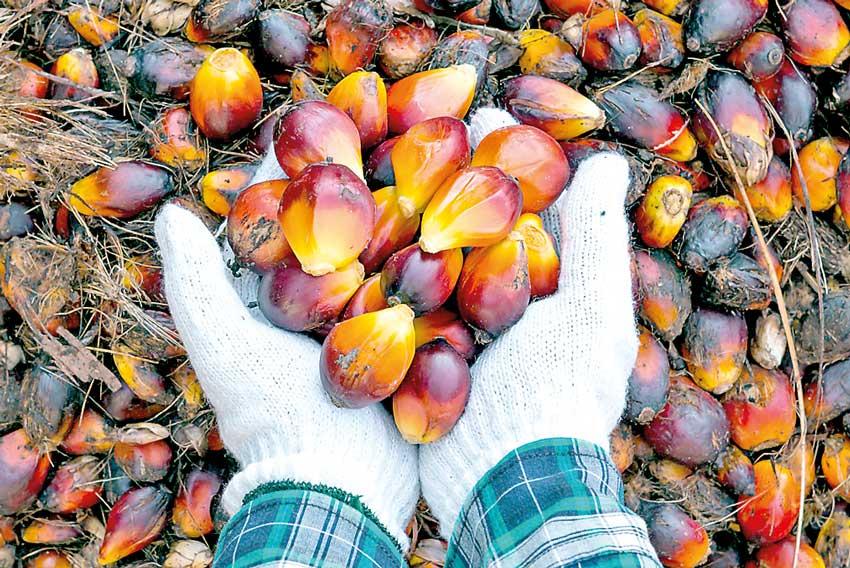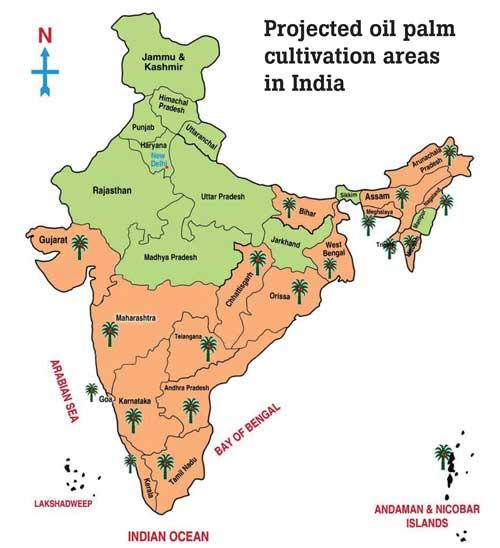02 Mar 2020 - {{hitsCtrl.values.hits}}

Your Excellency, 
The media recently reported about an overwhelming public demand for banning of oil palm cultivation at a gathering you attended recently in the South and you connived to do so. However, if I got you right, you had a proviso in your statement and that was to ‘do so if this crop is damaging the environment’.
The objection to oil palm is a classic example of misinformation and disinformation overriding correct facts. The main objection of the villagers in oil palm growing areas is that its excessive water use is drying up wells and streams. Regrettably, scientific evidence does not support this contention, in that the evapo-transpiration rates of oil palm is only some 8 percent more per unit area of land, compared to rubber.

Over the years, highly increased human water consumption due to population expansion, climate change/global warming have dried up many streams and other water bodies during the dry weather in most parts of the country and I have experienced this happening in my own land in Kandy.
It is highly regrettable that the Central Environmental Authority (CEA) and some scientists who claim excessive water use in oil palm had compared the rate of transpiration of a rubber tree versus an oil palm tree to arrive at this conclusion, rather than the unit land areas because only 143 oil palm trees are cultivated per hectare, as against 520 rubber trees.
Shamefully, a naive and highly erroneous report by the CEA dissuaded the former president from taking a decision on this matter. He sat on the report for over an year ignoring a highly scientific and factual report produced by the Coconut Research Institute (CRI), the organisation charged with research and development (R&D) on oil palm. The former president failed to consider dispassionately the views of the CRI or other independent scientists of the country.
Oil palm, together with palm kernel oil, accounts for over 40 percent of the global vegetable oil production and is contained in over 500 items of food. The global vegetable oil demand is projected to increase by 35 percent by 2050 and the expansion of oil palm cultivation is expected to be the main source to meet it.
Being a highly productive crop yielding five and 10 times more oil than coconut and soybean, respectively, oil palm must necessarily consume more water and nutrients but it is as environmentally friendly as a tropical rain forest in that it sequesters 1000 tonnes/ha/yr of carbon dioxide, the main gas responsible for global warming and concurrently releases 210 tonnes/ha of oxygen. The comparative output to input the energy ratio of oil palm is as high as 9:1, as against 3:1 for annual oil seeds.
Its economic benefits far outweigh that of coconut, tea and rubber in that comparative returns/ha/yr for raw produce are Rs.612,0000 175,000, 88,000 and 80,000, respectively as per an estimate made by some scientists.
Your comment at the above-mentioned meeting to take oil palm to the North and East is sensible. Of course, cultivation of oil palm in the dry areas should essentially be under irrigation. Regrettably, we are yet harvesting only 35 percent of the total rainfall in our reservoirs and there should be the need to expand rain water capture and irrigation to enable oil palm cultivation.
In view of croppable land limitations, there is now a notable global trend of replacing low-yielding and less economical crops with more productive and economic ones. Perhaps the best example of this is the expansion of the oil palm cultivation in India. The target is two million hectares, much of which is to be under irrigation in the semi-arid areas, replacing low-yielding arable crops such as soybean and sesame.
Our plantation crops policy should not be rigid. Let the growers decide what to grow. The rubber extent has decreased rapidly over the years because of poor returns and labour shortages. Some lands have been diversified into tea but many of the less enterprising rubber growers are at a loss. Why should they not be given the option and incentives to grow oil palm, as was done in Malaysia in the 1960s?
Oil palm is also an answer to labour shortage being the plantation crop that has the lowest labour demand. The then Malaysian government had the so-called 60:40 policy of land use for rubber and oil palm but within a few years, by mid-1960s, seeing the growing global demand for vegetable oils and comparatively lower returns from rubber, the policy was changed to 60 of oil palm and 40 of rubber.
New smallholder oil palm projects were established and today over a third of the oil palm cultivations, both in Malaysia and Indonesia, are in smallholdings. A World Bank appraisal report some years back revealed substantial improvements in incomes and livelihoods of those oil palm smallholders.
Moreover, some 60,000 acres of paddy lands remain uncultivated in the wet and intermediate zones, essentially because of high labour costs and poor returns. Why not some of these lands be cultivated with oil palm with appropriate drainage and land preparation? Oil palm is a crop that can grow in ill-drained soils and withstand seasonal flooding as evident from some cultivations in Malaysia and Indonesia.
Fallow paddy lands in the urban areas may ideally be used for high value crop production. All this will require amendment of the obsolete Agrarian Development Act of 2000 enabling diversification of the relevant paddy lands. We have been retaining paddy lands fallow in the name of food security. There is thus the need for reappraisal of our land use policies.
Finally, at that meeting you also expressed concern whether palm oil is a health risk. Perhaps you are not aware that over 70 years ago, after the Second World War, when coconut and palm oils re-entered the US and European markets, the soya oil lobby together with the American Heart Association’s support attempted to disrupt their markets calling them ‘artery –clogging tropical oils’.
By contrast, now coconut oil has become the ‘darling oil’ of the west and palm oil, the world’s most widely consumed vegetable oil, beating soya oil to the second place. All oils and fats used in moderation (15 percent of the diet) hardly pose health risks. Palm oil has the health benefit of having 38 percent monounsaturated fats, which lowers the bad (HDL) cholesterol.
Many anti-oil palm lobbyists seem to be unaware of this fact. Recently, some concern has been expressed of a compound, 3-MCPD, a by-product formed during processing of palm oil, being carcinogenic.
However, a recent FAO/WHO determination specifies that its Tolerable Daily Intake (TDI) is as high as four micrograms/kg body weight implying that large quantities beyond average daily intake need be consumed to reach risk levels of toxicity. On the other hand, repeated use of any oil for frying, not only palm oil, can produce certain toxins, which are bad for the health. On the whole, the health benefits, too numerous to mention here, heavily outweigh the risks.The quality of edible vegetable oils available in the market has been a serious concern in that repeatedly used oil is often mixed with good quality oil and marketed. It is up to the Sri Lanka Standards Institute and Sri Lanka Science and Technology Institute to provide quality assurance of oil sold in the market via testing and ensuring that all vegetable oils in bottles and other containers are quality labelled. This does not seem to happen now.
In conclusion, the national requirement of vegetable oil is in excess of 200,000 Mt per annum, of which we produce only about 25 percent (50,000 Mt of coconut oil and about 15,000 MT of palm oil) and the bulk, essentially palm oil, is imported.
In economic terms, the country should do well to produce our entire vegetable oil demand, which means we should at least cultivate 50,000 hectares of oil palm in the short term. The government should address this need as a matter of high priority.
Secondly, there is a need to educate the public and the ignorant politicians (who haphazardly cut down palm oil trees in forest reservations for political gain, now that the election is approaching) on the truth about wells and streams drying. Ideally, a hydrological study should be undertaken comparing an oil palm growing area with a similar tea and/or rubber growing area for conviction. An independent body such as the Natural Resources Management Centre of the Agriculture Department should be assigned to do it. This should have been done by the CEA before it published the naive report referred to above.
So, Your Excellency, let us not ‘throw the baby away with the bathwater’!
16 Nov 2024 3 hours ago
16 Nov 2024 3 hours ago
16 Nov 2024 4 hours ago
16 Nov 2024 4 hours ago
16 Nov 2024 4 hours ago